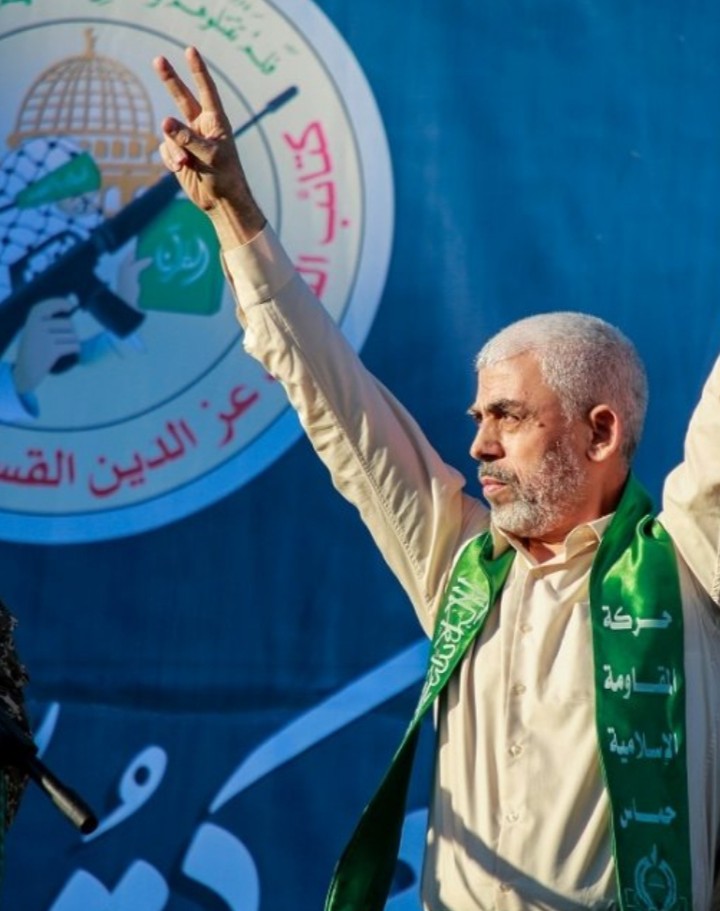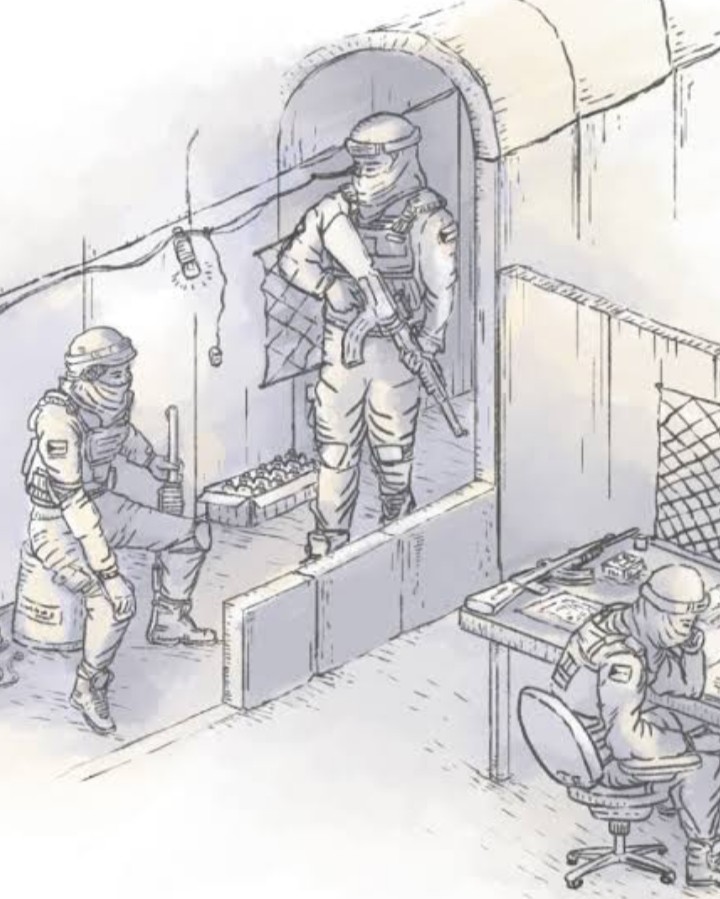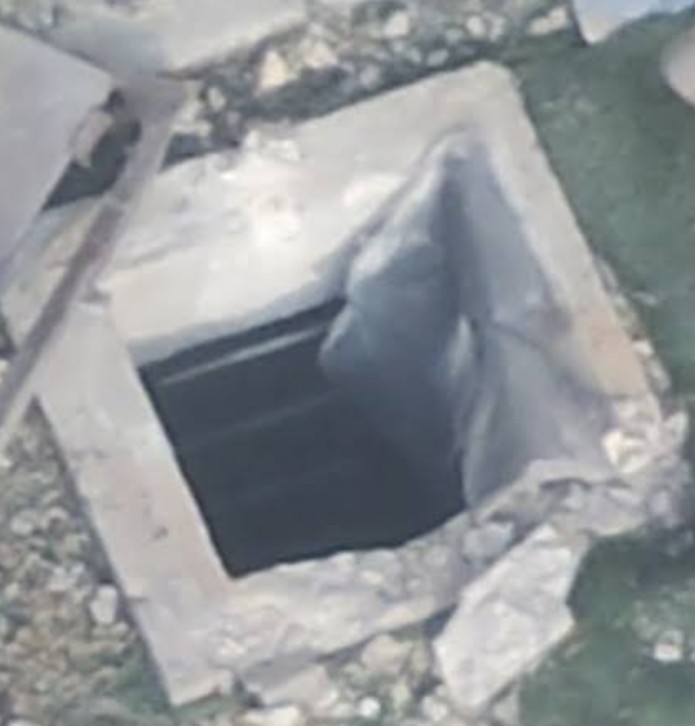
Yahya Sinwar, Hamas leader
By Amos Harel
The fighting in the Gaza Strip is a bit more complicated than what Netanyahu has tried to paint as a ‘phenomenal success.’
The IDF is gradually learning that all Israeli intelligence knew about the array of defensive tunnels dug by Hamas under Gaza doesn’t scratch the surface of the project
Prime Minister Benjamin Netanyahu, who has yet to find the time to comfort families bereaved in the war, let alone visit the kibbutz refugees from the Gaza border, on Tuesday released another long press release about another show visit to IDF troops. This time it was the members of the elite Egoz and Haruv units who were invited to serve as a backdrop to the leader, who leads Israel at war with popularity figures reminiscent of Ehud Olmert’s days at the end of the Second Lebanon War.
“We do not intend to stop,” Netanyahu informed the combat troops he met at Tze’elim Base. “We intend to go on till the end. I want to tell you that what we’re seeing on the ground, from reports I’m receiving and the war cabinet, talking with commanders and soldiers – it’s an incredible success. I’m telling you: There were Americans here. They came and explained what happened in Fallujah [during Iraq War] and what happened here and what happened there, and they are amazed at out achievements. It’s true that there are problems too: There are drones and IEDs and anti-tank fire. Sometimes even very painful casualties. But all in all, the success is phenomenal.”

‘It’s very personal’: Inside Gaza with Israeli soldiers
Conversations with IDF commanders, those leading the fighting in the Gaza Strip and those running it in the ranks above them, at IDF headquarters, reveal a somewhat more complex picture. The IDF is indeed pleased, and even pleasantly surprised, at the professional level of the ground forces in the second week of the ground maneuver in Gaza.
The forces’ determination, the cooperation with the Air Force and intelligence officers – all these shine. But the question still troubling is the degree to which Hamas wishes to fight right now.
On Monday there were few incidents, considering that IDF forces are encircling Gaza City and are already active in its southern and western outskirts. On Tuesday fighting was fiercer, but there is still an impression that in some places, Hamas prefers to leave its fighting personnel in the underground tunnels, and to send only small squads against the IDF’s forces, focusing on anti-tank fire at close range and attempts to attach explosive devices to tanks and personnel carriers. Hamas may be trying to retain most of its forces in this manner.
The fact that the organization rejects any real negotiation on a broad release of hostages also may indicate that its leadership does not view its situation right now as critical. There has been some decline in the scope of rocket fire on the center of the country Monday and Tuesday. There are apparently two factors at work here: Hamas’ difficulty in launching from the northern Strip due to the IDF’s attack, and a desire to leave enough mid-range rockets for the next stages of the war.
The duration of the war, at the current troop count, is also not indefinite. The U.S., which supports the Israeli effort to defeat Hamas, is concurrently pressing to establish longer humanitarian lulls and are signaling that in the not-distant term, the nature of the fighting will have to be considered. The Southern Command wants long months to complete the job, to damage Hamas mostly in the north of the Strip, and sweep these areas thoroughly in order to strike at terrorists and collect munitions. The U.S. administration is talking to Israel about adjusting the format for the fighting ahead: Withdrawing most of the forces from the Strip and a shift to a method of pinpoint raids on Hamas installations, in the northern Strip and perhaps elsewhere as well.
What is the reality the IDF means to create when the war is over? The answers are not yet clear enough. The thinking is that Hamas’ military and organizational strength can be dismantled, not completely destroyed, as an ideology cannot by destroyed. The military brass, unlike Netanyahu’s circles, is not talking about eradicating the seed of Amalek.
And yet, the thinking is that continued massive attacks on Hamas will eventually lead to change; that the increasing pressure on its northern forces, and the loss of its military power, will promote some future arrangement in which Arab and international forces will be involved, while removing Hamas from the political game in the Palestinian arena. This is a somewhat vague plan, full of gaps in the way it attempts to describe what comes next, but at least it touches upon these questions. Netanyahu, to the chagrin of American counterparts, completely refuses to discuss desirable outcomes with them.
A central part of achieving success depends on the matter of the tunnels. The IDF is gradually learning that everything Israeli intelligence knew about the array of defensive tunnels dug by Hamas under the ground of Gaza, doesn’t scratch the surface of the scope and sophistication of the project, which may be the largest of its sort in the world.
According to intelligence sources in the West and in Israel, the organization’s leadership and military wing constructed the capacity for staying inside the tunnels for long months. Defense Minister Yoav Gallant said last week that Israel has developed new technologies to damage the tunnels. Should a breakthrough be achieved, allowing for broader destruction of the tunnels, the organization’s relative edge may be lost, and it may be forced to face the IDF under less convenient circumstances. In the optimistic scenario, this may be the tie-breaking move that Israel seeks.
Northern border dilemma
The war cabinet and the IDF are still focusing the war priorities on the Gaza Strip, where the IDF is on the offensive. The northern front, despite intensifying attacks by Hezbollah, a stronger opponent than Hamas, is second on the list. And there, Israel is on the defensive, although the IDF is gradually exacting a higher and higher toll from Hezbollah.

A visit to the Northern Command on Tuesday gave a good impression. On October 7, in the hours following the attack in the south, large numbers of reserve forces were called up north. According to Hezbollah Secretary-General Hassan Nasrallah, he was surprised by the timing of the Hamas attack, which was not coordinated with him.
While Hamas apparently expected Hezbollah and Iran to join in, and exploit the blow that Israel sustained, Nasrallah was still dithering. The IDF used this time to beef up the defensive forces. By the next day, tens of thousands of reservists were deployed along the Lebanese border. Hezbollah lost the chance to surprise, but immediately began launching attacks in the Mount Dov area, which later developed into mortar, rocket and anti-tank fire, and attempted incursions all along the border.
Since then, six Israeli soldiers and two civilians have been killed at the border. The fatalities sustained by Hezbollah, alongside Palestinian terror groups, have apparently exceeded 80. This burden is carried by the reserve forces, with the aid of the Northern Command headquarters and the divisions. And yet, the achievement of the Shi’ite organization, which has managed to empty the Israeli border locales of residents, should not be ignored. Nasrallah has been escalating his attacks each week, but still tries to remain below the bar of outright war.
All moves on the border are run by Hezbollah, even when the hands at work are Palestinian. Hezbollah plans the attacks and aids them. Concurrently, there is tension due to the possibility of another front opening at the Syrian Golan. Hezbollah has military infrastructure there, and the Iranians are considering sending militias from Iraq.
Netanyahu, in another short speech to the nation on Monday, spoke of the need to return the Lebanese border residents to their homes and allow them secure lives. The practical upshot of this statement, which the prime minister prefers not to specify, is the removal of the Radwan commando force personnel from the borderline.
The IDF has already struck some Hezbollah positions and outposts near the border, but this is insufficient. The regional council heads in the area are telling Northern Command personnel explicitly: We will not return to our homes until Radwan is kicked out. The lower you go in the ranks – from the government, to IDF headquarters, to the command and the regional divisions, so the statements regarding the need .
Credit: Haaretz







